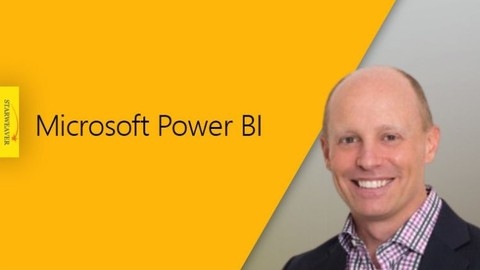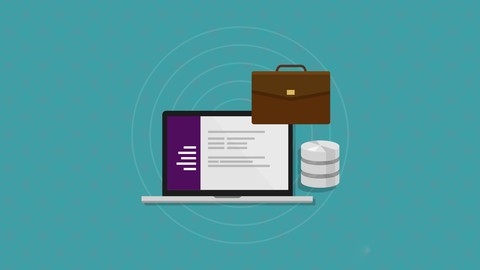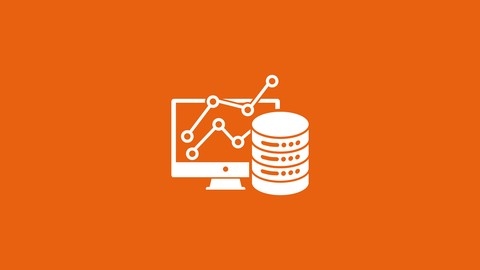Data modeling is the process of creating a visual representation of data and how it relates to different aspects of a business, like processes, entities, and systems.
It’s a critical skill for anyone working with data, from database administrators and data analysts to business intelligence professionals and data scientists.
A strong understanding of data modeling enables you to design efficient databases, build robust data warehouses, and make informed decisions based on accurate and well-structured data.
By mastering data modeling, you’ll be equipped to tackle complex data challenges and unlock valuable insights for your organization.
Finding the right data modeling course on Udemy can be overwhelming.
With so many options available, it’s easy to get lost in the sea of courses.
You’re looking for a course that not only covers the theoretical foundations but also provides practical, hands-on experience, equipping you with the skills you need to excel in real-world scenarios.
You want instructors who are experts in the field and can guide you through the complexities of data modeling with clarity and precision.
For the best data modeling course overall on Udemy, we recommend Mastering Data Modeling Fundamentals.
This course offers a comprehensive introduction to data modeling, taking you from the basics to advanced techniques.
It covers essential concepts such as entities, attributes, relationships, and different levels of data models, providing you with a solid foundation for building effective data models.
The course also includes practical exercises and real-world examples, allowing you to apply your knowledge and solidify your understanding.
While Mastering Data Modeling Fundamentals is our top pick, there are other excellent data modeling courses on Udemy that cater to specific needs and learning styles.
Keep reading to discover our other recommendations, covering various tools, techniques, and specializations within data modeling.
Mastering Data Modeling Fundamentals
This data modeling course takes you step-by-step from the basics to advanced techniques.
You begin with data modeling fundamentals, exploring its purpose and how it relates to database design.
You’ll contrast transactional and analytical data modeling, learning key terms and concepts to build a strong base.
This initial phase ensures you understand why data modeling matters and the different ways businesses use it.
You then explore the core building blocks of data modeling: entities, attributes, and relationships.
You’ll learn how to represent these elements, incorporating multi-valued attributes and defining relationships between entities.
The course also covers real-world complexities like hierarchies, attribute constraints, and the nuances of strong and weak entities, preparing you to create practical, robust models.
This section provides the hands-on skills you need to start structuring your own data models.
Next, you delve into relationship complexities, mastering cardinality (minimum and maximum) and using Crow’s Foot notation to visualize these relationships.
You’ll discover how to accurately represent the connections between entities, a critical skill for building effective data models.
This focus on relationships ensures you can create models that accurately reflect real-world data structures.
You then learn how to navigate different levels of a data model, including conceptual, logical, and physical models.
You’ll practice forward and reverse engineering between these levels, translating high-level designs into practical database implementations and vice-versa.
This experience bridges the gap between theoretical modeling and practical database design.
You’ll develop the skills to move seamlessly between different levels of abstraction.
Finally, you explore data modeling software.
The course covers using drawing programs and dedicated data modeling tools.
You’ll build a data model using software, applying your knowledge and gaining hands-on experience.
This practical application solidifies your understanding and equips you with the skills to use professional tools in real-world projects.
Data Modeling and Relational Database Design using ERwin
This data modeling course using ERwin guides you from foundational concepts to advanced techniques.
You begin with the basics of data modeling and the Entity Relationship Model, learning the standard notation used in Information Engineering.
You quickly transition into the practical application of these concepts with ERwin, navigating its workspace and mastering diagram creation.
You explore diverse relationship types, including identifying and non-identifying, recursive relationships, and the nuances of supertypes and subtypes, even learning how to transform them.
Hands-on exercises, like designing a retail banking system, reinforce these concepts.
You then dive into ERwin’s core features.
You learn to use the Bulk Editor for efficient modifications to entities and tables.
Forward and reverse engineering become essential tools in your skillset, enabling you to generate database schemas from your models and create models from existing databases.
You discover the power of the Complete Compare feature for analyzing model differences and master the Reporting and Publishing tools to generate professional documentation in various formats like HTML and PDF.
You also learn to build and utilize a Domain Dictionary and apply naming standards for consistent and organized models.
The course progresses to more complex topics, including dimensional modeling.
You learn to design star schemas, a crucial skill for data warehousing, using a retail sales example.
You gain experience in documenting and publishing source-to-target mappings and ETL (Extract, Transform, Load) rules.
You then delve into the critical process of database normalization, covering the first three normal forms and Boyce-Codd Normal Form (BCNF), ensuring data integrity and efficiency.
You solidify your knowledge through logical data modeling exercises, tackling real-world scenarios like designing databases for a public library and a transportation service.
This provides practical experience and helps cement your understanding of database design principles.
Modeling Data Warehouse with Data Vault 2.0
This course provides a comprehensive overview of data warehousing concepts, starting with traditional modeling techniques and progressing to the Data Vault 2.0 methodology.
You’ll begin by learning about Entity Relationship Diagrams (ERDs), database normalization forms, and the differences between OLTP and data warehousing systems.
The course then dives into dimensional modeling, covering star and snowflake schemas, slowly changing dimensions, and conformed dimensions.
You’ll practice converting an ERD to a 3NF model and then to a dimensional model.
Next, you’ll explore the fundamentals of the Data Vault 2.0 approach, including its core components like Hubs, Links, and Satellites.
The course covers various types of Link tables, such as transactional, hierarchical, and exploration links, as well as different Satellite table types like multi-active, status tracking, and effectivity satellites.
You’ll learn about the Data Vault architecture, including the staging area, enterprise data warehouse layer, and information layer.
The course also introduces business vault concepts like Point-in-Time tables, Bridge tables, and Reference tables.
Additionally, you’ll understand how to build dimensional models within the Data Vault framework, covering Type 1 and Type 2 dimensions with single and multiple satellites, as well as fact tables.
The course compares the differences between 3NF, dimensional models, and the Data Vault approach, allowing you to practice converting 3NF and dimensional models to the Data Vault structure.
Data loading architectures, including full and incremental loads (batch and streaming), are covered, along with the loading logic for Hubs, Links, and Satellites.
Finally, the course touches on integrating Data Vault with big data technologies and explores the Agile methodology’s alignment with the Data Vault approach.
Applied Statistical Modeling for Data Analysis in R
This applied statistical modeling course using R takes you from the fundamentals to advanced techniques.
You begin with the basics of statistical modeling, learning how to design effective studies and collect reliable data.
You’ll also learn about the different types of data you’ll work with, giving you a solid foundation before diving into the practical application of R.
This course uses R Studio, a powerful statistical software, to bring these concepts to life.
You then move into working with R, mastering essential skills like data manipulation, cleaning, and exploratory data analysis.
You learn to handle various data structures within R, import data from different sources, and manage missing values—critical skills for any aspiring data analyst.
You’ll also explore descriptive statistics, using measures of center and variation to summarize quantitative data.
You’ll create informative charts and graphs for both continuous and discrete data and learn how to interpret qualitative data.
This section solidifies your understanding of different data types and equips you with essential data visualization skills.
You’ll also cover probability distributions, focusing on the normal distribution, z-scores, and confidence intervals—foundational concepts in statistical analysis.
The course then progresses into statistical inference, where you learn about hypothesis testing using t-tests and their non-parametric counterparts.
You’ll dive into one-way and two-way ANOVA and understand how to interpret their results.
From there, you’ll explore the relationships between variables using correlation and linear regression, learning how to handle multi-collinearity and work with categorical variables.
The course further expands your regression toolkit by covering advanced techniques like ANCOVA, polynomial regression, and generalized linear models (GLMs), including logistic and Poisson regression.
This comprehensive coverage prepares you for a wide range of statistical modeling challenges.
Finally, you explore the powerful world of multivariate analysis.
You’ll learn techniques like cluster analysis, principal component analysis (PCA), linear discriminant analysis (LDA), correspondence analysis, non-metric multidimensional scaling (NMDS), and multivariate analysis of variance (MANOVA).
These techniques will enable you to analyze complex datasets and uncover hidden patterns.
Additional lectures cover practical topics like using R in different environments and advanced data manipulation, making this a complete learning experience.
Microsoft Power BI for Advanced Data Transformations
This Power BI course from Enterprise DNA takes you on a journey from data newbie to modeling master.
You begin with Power Query fundamentals, learning how to import data, wrangle it with the Query Editor, and write M code.
You’ll clean data, transform columns and rows, and handle dates like a pro.
This foundation prepares you for the more challenging concepts later on.
You then explore advanced data transformations, learning to append, merge, and unpivot queries.
You’ll create custom columns and functions, and even learn how to parameterize your data.
These techniques empower you to reshape and analyze data exactly how you need it.
You’ll be able to tackle complex datasets and build dynamic analyses.
Next, you delve into the intricacies of data modeling.
You’ll build advanced models using best practices, including working with lookup tables, supporting tables, and even multi-layered models for complex data scenarios.
You’ll also discover the power of “What-If” parameters for scenario analysis and learn how to optimize your models for peak performance, shrinking file sizes without losing valuable data.
You’ll discover how active and inactive relationships impact your model’s efficiency.
Finally, you explore optimization techniques, specifically how active and inactive relationships affect performance.
Microsoft Power BI - Data Modeling & Data Manipulation
This Power BI course takes you on a data modeling journey, starting with the basics and building up to advanced techniques.
You begin by exploring the Power BI environment, learning to use Power Query and building a foundation in data modeling.
You’ll practice creating visualizations, starting simple and progressing to more complex displays.
This hands-on approach helps you quickly become comfortable with the software.
You then delve into data modeling, the heart of insightful analysis.
You learn to construct effective models, mastering DAX formulas, calculated columns, and measures.
Understanding filter context is essential for creating dynamic reports, and this course emphasizes its importance.
You’ll also learn how to share your reports, enabling effective communication of your findings.
The course then shifts to creating interactive visualizations.
You learn to connect Power BI to databases, manipulate data for optimal visual impact, and use parameters to create flexible reports.
Working with complex tables, establishing relationships between them, and consolidating information from multiple data sources—all crucial real-world skills—are covered in detail.
You’ll then refine your reports with advanced features.
Drill-through filters and tooltips enhance interactivity, while themes and graphics add polish and clarity.
You’ll even learn how to incorporate a question-and-answer feature, making your reports more user-friendly.
The Melonhead Farms case study provides a practical application of advanced data modeling and visualization, solidifying your skills.
You’ll emerge capable of building sophisticated and impactful reports.
Learning Data Modeling
This data modeling course takes you on a journey from database basics to advanced techniques.
You begin with the fundamentals of databases and data models.
You then explore the data modeling development process, learning how to transform raw information into a well-structured model.
You discover different notations, like UML and IE, and learn how to represent crucial elements like entities, attributes, and relationships.
This includes understanding concepts like multiplicity and generalization, giving you a solid foundation in data modeling principles.
You then move into advanced modeling techniques, tackling identity, derived data, and various types of associations.
You’ll work with complex data structures using taxonomies and packages, and you’ll learn how to avoid common modeling pitfalls.
This course emphasizes practical application.
You build a UML data model from scratch, then translate it into an IE model using tools like ERwin.
This hands-on experience solidifies your understanding of these core modeling techniques.
You’ll create databases in both SQL Server and MS Access, learning to define schemas, tables, indexes, and constraints.
This practical experience extends to working with views and other crucial database design elements.
The course also covers essential software engineering principles, including agile data modeling, documentation best practices, and effective model presentation.
You explore different data modeling patterns and learn how to reverse engineer existing databases.
You’ll also learn about different kinds of data models, like operational, enterprise, and master data models, along with data warehouse design principles.
OBIEE 12c Data Modeling Course
This OBIEE 12c Data Modeling course takes you on a journey from OBIEE basics to advanced data modeling techniques.
You’ll begin by exploring the OBIEE architecture, learning about components like the BI Server, repository (RPD), and the Admin Tool.
You’ll then set up your own OBIEE 12c virtual appliance, gaining practical experience with installation and configuration, and tackling potential roadblocks like Node Manager issues.
You’ll also configure the Data Direct Driver and DSN for database connections, preparing you for hands-on data modeling work.
You’ll then dive into the core principles of data modeling, learning Kimball’s dimensional modeling approach and star schema design, along with data denormalization techniques.
You’ll work directly with the RPD, exploring and modifying its physical, business model and mapping, and presentation layers.
This hands-on experience is reinforced through projects where you build an RPD from the ground up for the Sales Analysis sample application.
You’ll create aliases, keys, and joins, solidifying your understanding of how these elements work together.
The course emphasizes practical application through a series of projects.
You’ll create your own RPDs and build analyses, developing proficiency in creating logical tables and adding multiple sources to a single logical table.
You’ll also manage presentation columns and tables, ensuring your data is organized effectively.
You’ll create calculation measures using existing logical columns and functions, and work with various hierarchy types: level-based, parent-child, ragged, and skipped.
You’ll learn how to implement level-based measures and use initialization blocks to control data retrieval.
Finally, you’ll explore time series functions like AGO, TODATE, and PERIODROLLING, empowering you to analyze data trends over time.








